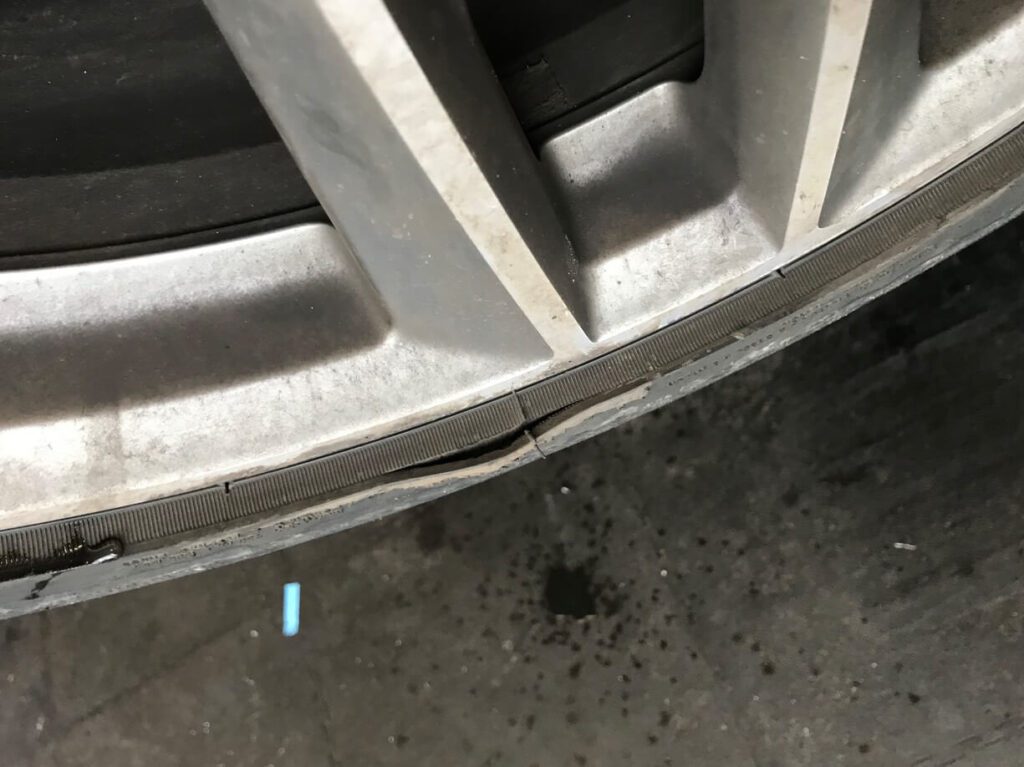You’ll find you only spot a bulge in the tire when you’re in a hurry and already running late; that’s just typical. You may ask yourself if it is safe to drive with a bulge in the tire sidewall and how it got there.
This article answers all those questions and has tips on preventing getting another one!
Is It Safe to Drive With a Bulge in the Tire Sidewall?
It is not safe to drive with a bulge in the tire. This is now a fragile point on the tire; the tiniest impact from a bump in the road or even grazing some debris could cause the tire to blow out and shred.
A tire bulge is a ticking time bomb regardless of whether you have another impact on it; if the bulge were to increase in size (which they do), it would suddenly cause the tire to burst. If and when it blows out, you will have difficulty controlling the vehicle if traveling at speeds. The other problem is the damage a blowout can cause to the suspension, drivetrain, and brake components.
The only reason you would know if you have a bulge is to pull over and check the sidewall after a heavy impact on the tire. Try to move the car to a safe place before stopping. If you find you have a tiny bubble, it will be ok to move the vehicle off a main busy road to a garage or to put the spare tire on but drive slowly and carefully; there are no guarantees as to how long the tire will last.
What Causes a Bulge in the Sidewall of a Tire?
A bulge or bubble on a tire’s sidewall is usually caused by an impact, most commonly from hitting the curb or a large pothole. It can also happen from driving for long periods on a flat tire or at least semi-inflated, which causes unnecessary extra pressure on the sidewall. A standard road-going tire can only handle so much abuse before something has to give way.
Imagine you are driving along and whack you hit a curb; this sudden impact can cause the plies that reinforce the sidewall to snap or split. Once these reinforcement belts break, the sidewall has nothing substantial to keep the tire in its original shape. As a result, the sidewall bulges; as you drive, the pressure on the bump forces more air into the bubbles air pocket, and the swelling appears getting bigger and bigger.
Bulges aren’t always immediately noticeable and might take a few miles to appear. Even then, it might be so small that its not apparent for a few days. Unfortunately, there is no way to stop a bubble from appearing once the sidewall construction has failed.
Bulge in the tread
A bulge in the tread is similar to a sidewall bulge; however, the steel belts that run through the top of the tire have broken. An impact rarely causes this, but the most common cause is air getting to the steel bands from a cut in the tread and causing corrosion. This means the tire loses its shape and can end up egg-shaped. This type of problem rarely happens with a new tire but more commonly on older tires or those not moved for long periods.
Can a Tire Bulge Be Repaired?
A bulge in the tire cannot be repaired, and seeking a replacement tire is the only method of repair. If you are unlucky enough to spot egg on the tire sidewall, you should either call roadside assistance to fit the spare tire or fit the spare tire yourself asap and get the car to the nearest tire garage for replacement.

How to Prevent a Tire Sidewall Bulge
Preventing a sidewall bulge involves checking the tire regularly. It may not be possible to avoid a big pothole on the road. But there are causes of a sidewall bulge that can be prevented. You should check the following:
- Tire condition – looking for any cracks and cuts to the sidewall and tread.
- Tire pressures – checking and topping them up atleast monthly.
- Tread depths – making sure your above the legal limit.
A tire specialist should check any minor issues with any of the above. No matter how small of a cut in the tire, if it’s through to the fabric, it may result in a bulged tire or, worse, a sudden flat tire.
If a specific tire is a few PSI down on the others, you should recheck the pressure in a day or two to see if you have a puncture; running low can cause a weakness in the sidewall and, ultimately, a bulge.
Checking the tread depths doesn’t prevent you from getting a sidewall bubble, but it makes you look at the tires and check for problems.
Conclusion
A bulge in the tire sidewall is not safe to drive on. It is possible to slowly move the car and get yourself off a busy road and to a safer spot where you should fit the spare tire. A tire bulge will blow out with little warning, so keep the speed to a minimum if you have to move it.
Tire bulges are caused by impacts directly to the sidewall, most commonly from hitting curbs or driving over potholes. A tire with an egg on the side must be replaced and cannot be repaired.









